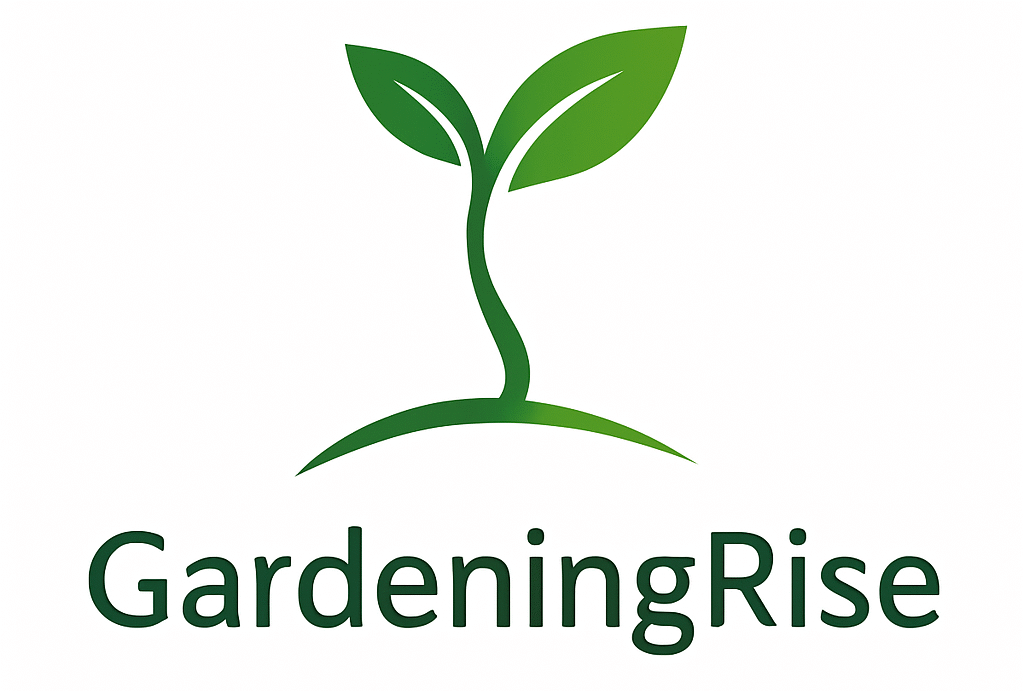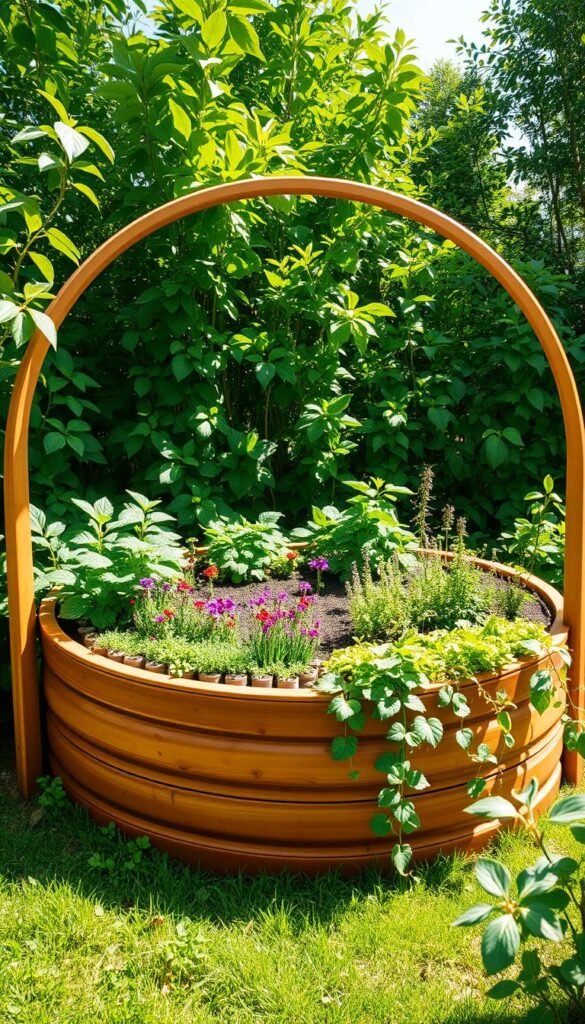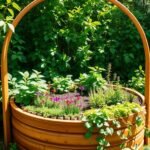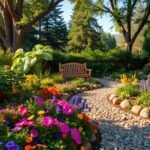Small outdoor areas don’t have to limit your growing ambitions. Curved planting zones offer a clever way to grow more in tight spots while keeping your landscape looking tidy. Unlike boxy layouts, these circular designs use every inch efficiently—even in awkward corners or narrow side yards.
You’ll love how easy it is to reach plants without stepping into the soil. The smooth edges let you tend to herbs, flowers, or veggies from any side. No more straining your back or leaving trampled patches behind!
Another advantage? These eye-catching shapes create natural walkways that blend into your outdoor space. They guide visitors through your greenery while keeping the focus on your thriving plants. Even better, they work equally well in urban balconies or sprawling rural properties.
Imagine turning that forgotten corner by the shed into a lush tomato patch or a fragrant herb spiral. With smart planning, you can transform tricky spots into productive growing zones that look intentional and inviting. Ready to rethink how you use your yard? Let’s explore how circular layouts unlock possibilities you never knew existed.
Understanding the Benefits of Raised Bed Gardening
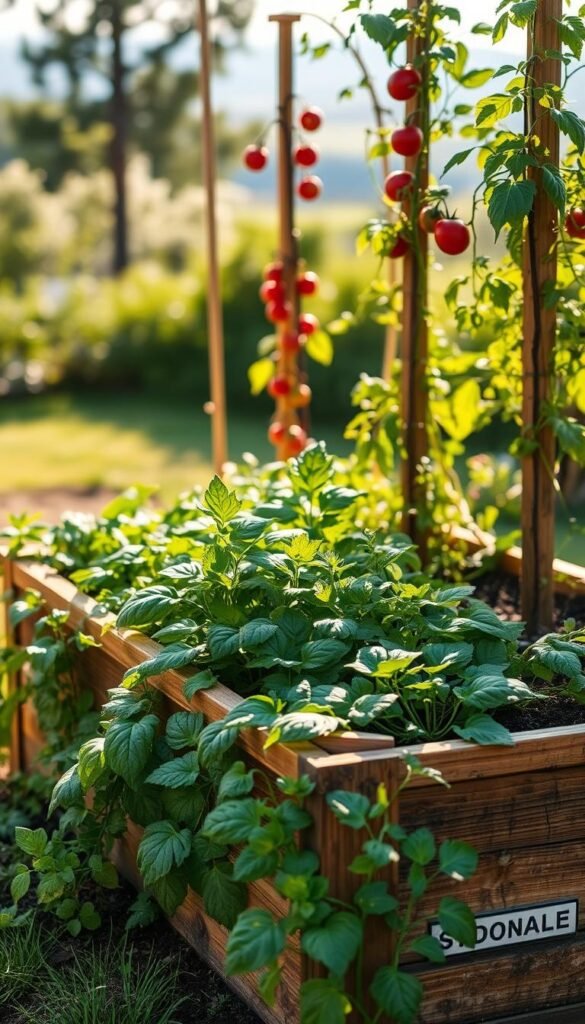
Gardening in tight spaces becomes a joy when you leverage structured planting systems that work smarter. These setups let you grow vibrant plants without sacrificing precious square footage, perfect for urban balconies or cozy backyard corners.
Space-Saving Advantages for Any Yard
Elevated planters turn cramped areas into productive zones. You control soil quality completely, mixing ideal nutrients for your crops. Better drainage prevents soggy roots, letting plants thrive even during rainy seasons.
The contained layout simplifies rotating vegetables annually. This natural pest management keeps your greens healthier. Plus, soil stays loose and warm, speeding up spring planting times.
Year-Round Growing and Maintenance Tips
Enjoy fresh produce longer with season-extending strategies. Add cold frames in autumn to protect late harvests. Mulch beds in summer to retain moisture and suppress weeds.
Accessibility improves dramatically with waist-high designs. No more kneeling—tend your plants comfortably. Organized layouts mean less time weeding and more time enjoying your oasis.
Round Raised Garden Beds: A Space-Saving Design for Any Yard
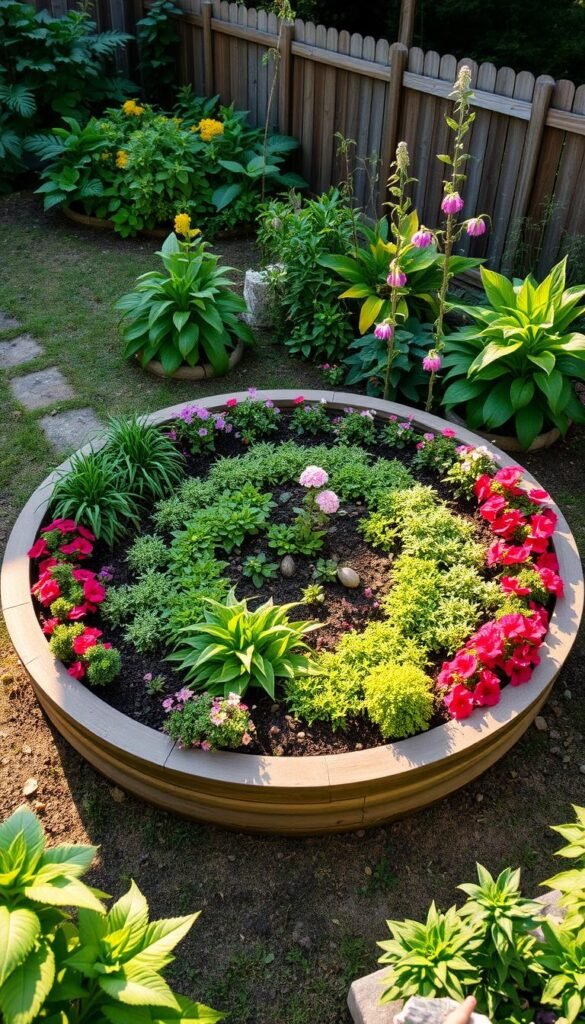
Transforming cramped outdoor spots into lush plant havens is simpler than you think. Circular growing areas adapt to curves and angles that boxy planters can’t, turning underused nooks into thriving green spaces. Their shape naturally guides movement around plants, keeping soil fluffy and roots happy.
Need to harvest herbs or check tomatoes? Walk around the entire structure without bending awkwardly. This 360-degree access means no more crushed stems or compacted dirt from leaning over edges. You’ll spend less time fixing damage and more time enjoying your harvest.
Sunlight dances differently on curved edges compared to flat sides. Position these planters to catch morning rays on one half and afternoon light on the other—perfect for pairing shade-loving greens with sun-hungry peppers. The table below shows how circular layouts outperform traditional shapes:
| Feature | Circular Layouts | Rectangular Beds |
|---|---|---|
| Space Efficiency | Fits irregular areas | Requires even space |
| Accessibility | All-side reach | Limited entry points |
| Aesthetic Flexibility | Blends with curves | Rigid appearance |
Whether you’re working with a postage-stamp patio or a sprawling lawn, these curved growers scale beautifully. Cluster smaller ones near seating areas or go big with a centerpiece bed. For budget-friendly ideas, explore our guide on building raised beds on a budget to start your project today.
Exploring Different Raised Bed Materials
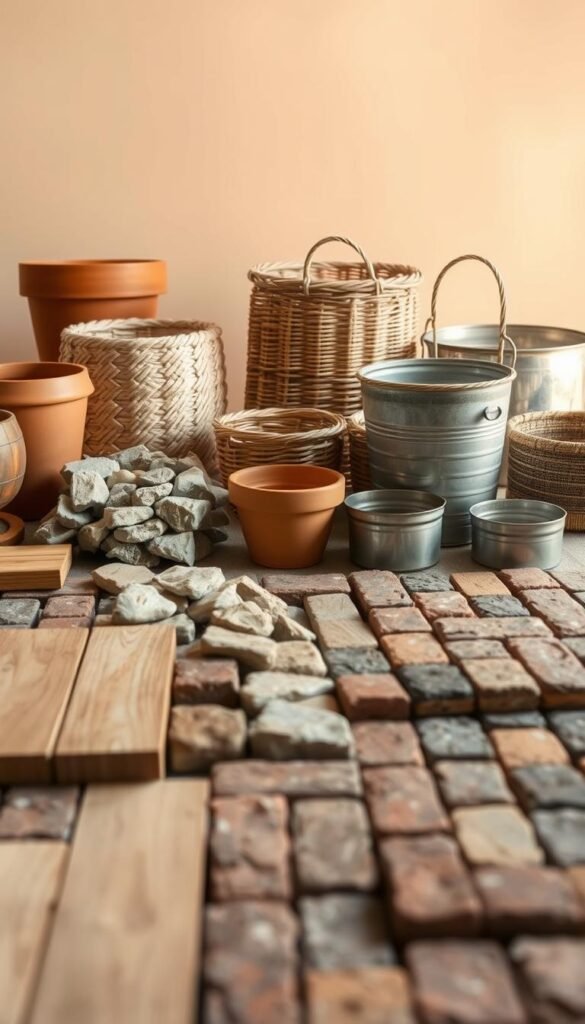
Your planting setup’s foundation starts with smart material choices. Each option brings unique benefits to your growing space, from heat retention to rustic charm. Let’s break down popular picks that balance practicality with visual appeal.
Galvanized Tubs and Metal Choices
Metal containers shine for early-season planting. Their sides absorb sunlight fast, warming soil quicker than wood or plastic. This thermal boost lets you grow cool-weather herbs weeks before ground temperatures stabilize.
Galvanized tubs work especially well for compact salad gardens. Just drill extra drainage holes to prevent waterlogging. Elevate them on decks if you have curious pets—ducks love digging in fresh dirt!
Timber, Concrete, and Stock Tank Options
Stock tanks offer farmhouse style with zero assembly. Their steel construction withstands harsh weather while providing deep root space for tomatoes or zucchini. For budget builds, stack concrete blocks into custom shapes—no special tools required.
Cedar lumber resists rot naturally and insulates plant roots during temperature swings. Compare popular materials below to match your climate and design goals:
| Material | Best For | Heat Retention | Drainage Needs |
|---|---|---|---|
| Galvanized Metal | Early crops | High | Extra holes |
| Stock Tanks | Deep-root plants | Medium | Pre-drilled |
| Concrete Blocks | Modular designs | Low | Gravel base |
| Cedar Timber | Natural aesthetics | Medium | Standard |
Mix and match textures to create visual interest. Pair sleek metal beds with rugged stone edges, or surround timber planters with creeping thyme. Your garden becomes an extension of your personal style.
Designing a Functional Garden Layout
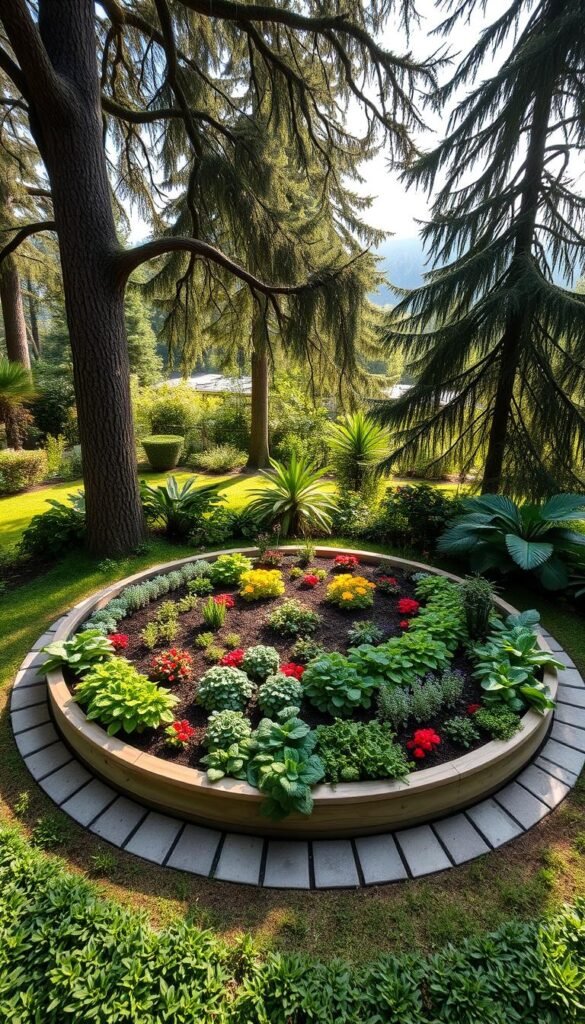
Smart outdoor spaces begin with understanding your environment. Track how sunlight moves across your yard during different seasons. Notice where shadows fall from trees or buildings—these patterns determine where plants will thrive.
Maximizing Sunlight and Microclimates
Position curved planters to catch morning light while shielding greens from harsh afternoon rays. South-facing spots work best for heat-loving veggies like peppers. North-facing areas suit leafy crops that prefer cooler roots.
Use natural windbreaks like fences or shrubs to create sheltered zones. These microclimates let you grow delicate herbs in breezy locations. Warmth-retaining materials like stone nearby can extend your growing season by weeks.
Creating Flexible Planting Zones
Keep pathways between structures at least three feet wide for easy access. This spacing lets you kneel, water, and harvest without bumping into edges. For tight areas, try staggered layouts that weave around existing features.
| Factor | Ideal Setup | Common Mistake |
|---|---|---|
| Sun Exposure | 6-8 hours with shade options | Full-day direct sun |
| Path Width | 36 inches | Narrow walkways |
| Microclimate Use | Wind-protected corners | Ignoring shade patterns |
| Crop Rotation | Seasonal zone shifts | Static layouts |
Rotate crops annually by dividing circular spaces into pie-shaped sections. Pair this strategy with square-foot gardening principles for maximum yield. You’ll maintain soil health while keeping your setup fresh and adaptable.
Innovative DIY Raised Bed Ideas

Revolutionize your outdoor space with clever projects that blend practicality with personality. Whether you’re upcycling materials or installing smart systems, these approaches turn basic planters into high-performing growing stations.
Stock Tank and Pallet Garden Inspirations
Galvanized stock tanks shine as instant circular raised beds. Their deep design accommodates carrot roots while adding rustic charm. Drill drainage holes, fill with soil, and plant—no carpentry skills needed. Pair multiple tanks to create a geometric herb spiral.
Wooden pallets offer budget-friendly potential. Disassemble them into slats for curved borders or stack intact units for tiered planters. Line with landscape fabric to prevent soil loss while maintaining airflow.
Self-Watering and Irrigation Upgrades
Combat dry soil with reservoir systems. Place perforated pipes beneath planting layers to distribute moisture evenly. Add a wicking bed using capillary matting—it pulls water from a bottom tank upward, keeping roots hydrated for days.
For professional results, install drip lines during construction. Connect them to timers for hands-free watering. This approach works perfectly with square-foot gardening methods, ensuring precise hydration for each crop zone.
Upgrade existing beds by attaching soaker hoses along inner walls. Bury them under mulch to reduce evaporation while delivering water directly to root zones. Your plants get consistent drinks without daily effort.
Planning for Effective Drainage and Soil Health
Healthy plants start with roots that breathe. Without proper water flow, your growing space becomes a swampy mess where nutrients drown and roots rot. Let’s fix that with smart strategies that keep moisture balanced.
Why Bottom Holes Beat Side Drains
Ever notice how water pools in containers with only side openings? I learned this the hard way after my herbs yellowed from soggy soil. Drilling 8-10 quarter-inch holes across the bottom of tubs transformed everything. Water now escapes evenly instead of lingering at the base.
“Adding bottom drainage turned my struggling mint into a jungle—it’s thriving where it once drowned,” reports a Gardenary user who upgraded their setup last spring.
Layer gravel or broken clay pots over the holes before adding soil. This simple step prevents clogs while letting excess moisture drain freely. Pair this with a mix of 60% potting soil, 30% compost, and 10% perlite for ideal texture.
Seasonal changes demand adjustments. In rainy months, add sand to your mix for faster drainage. During droughts, mix in coconut coir to retain just enough water. Your bed adapts to nature’s whims while keeping plants happily hydrated.
Enhancing Small Spaces with Containers and Planters
Urban dwellers often face the challenge of limited outdoor areas. Containers and planters turn cramped balconies or narrow patios into lush growing zones. Their vertical design and portability let you cultivate herbs, flowers, and veggies where traditional setups fail.
Self-Watering Planter Benefits
Raised containers dry out faster than ground-level gardens, especially in summer heat. Self-watering systems solve this with built-in reservoirs that feed roots through capillary action. A wicking mat draws moisture upward, keeping soil evenly damp without daily attention.
These smart planters work wonders for vacation weeks or busy schedules. You’ll avoid overwatering while giving plants consistent hydration. Pair them with square-foot gardening techniques to maximize yields in tiny spaces.
Choose container sizes based on crop needs:
- Shallow pots for lettuces and radishes
- Deep planters for tomatoes and carrots
- Modular units for adjustable arrangements
Rotate planters seasonally to chase sunlight or shield delicate greens. Their mobility lets you create microclimates simply by shifting positions. With less time spent watering, you’ll enjoy fresh harvests from even the smallest urban oasis.
Integrating Multi-Functional Garden Areas
Your backyard can become both a playground and a produce section. Smart design lets you host weekend barbecues while growing dinner ingredients steps away from the grill. It’s about making every corner pull double duty without feeling cluttered.
Dual-Purpose Zones for Planting and Recreation
Turn a basketball court into a pickleball arena by adding temporary nets. Surround it with curved planting beds filled with pollinator flowers—bees love the blooms while you enjoy the game. These edges create natural barriers that keep balls in play and add visual softness.
Install tall poles around activity areas for maximum flexibility. String café lights between them for evening gatherings, then switch to shade cloth when summer heat peaks. The same supports can hold hanging baskets of strawberries or cherry tomatoes during growing season.
| Feature | Recreational Use | Growing Integration |
|---|---|---|
| Sports Court | Basketball/Pickleball | Edible borders |
| Seating Area | Dining space | Herb planter tables |
| Flexible Poles | Lighting/Shade | Vertical planters |
Keep pathways wide enough for wheelbarrows and soccer balls alike. Use movable containers for herbs near seating areas—slide them aside when you need more space for lawn games. Your garden becomes the backdrop for memories, not just a separate chore zone.
Seasonal Gardening Strategies for Raised Beds
Your planting journey evolves with the seasons, and structured growing spaces adapt beautifully to each phase. Let’s explore how to maximize your harvests while keeping maintenance manageable.
Spring Planting Techniques
Start by refreshing soil with compost as frost retreats. This gives seedlings a nutrient boost for vigorous growth. Stagger cool-weather crops like spinach every two weeks for continuous harvests.
Try interplanting quick-growing radishes between slower veggies. You’ll get two harvests from one bed! For vibrant color year-round, incorporate low-maintenance flowers that attract pollinators while deterring pests.
Summer Care and Maintenance Tips
Mulch deeply to lock in moisture during heat waves. Check soil daily—if the top inch feels dry, water deeply at root level. Rotate crops monthly to prevent nutrient depletion.
Prune overcrowded leaves to improve airflow and reduce disease risks. With smart timing and these simple steps, your garden becomes a thriving oasis through every season.
